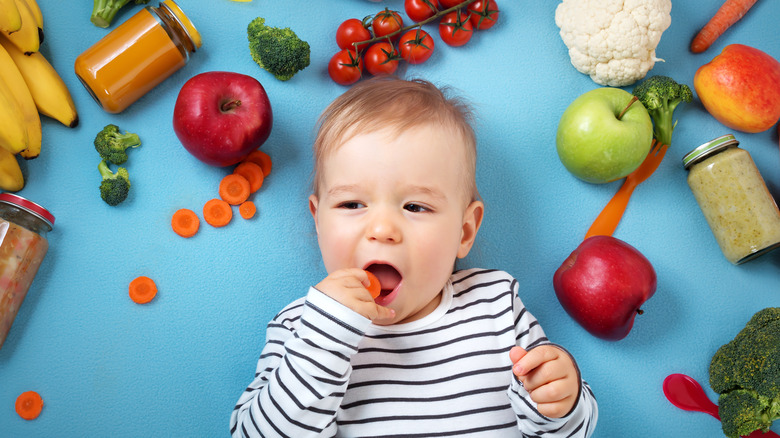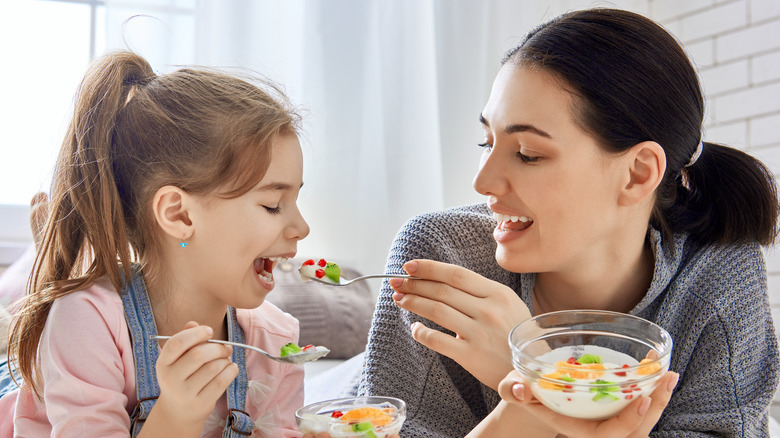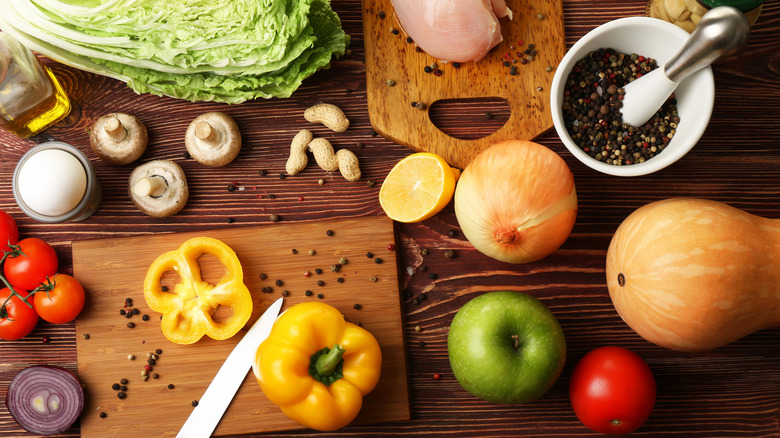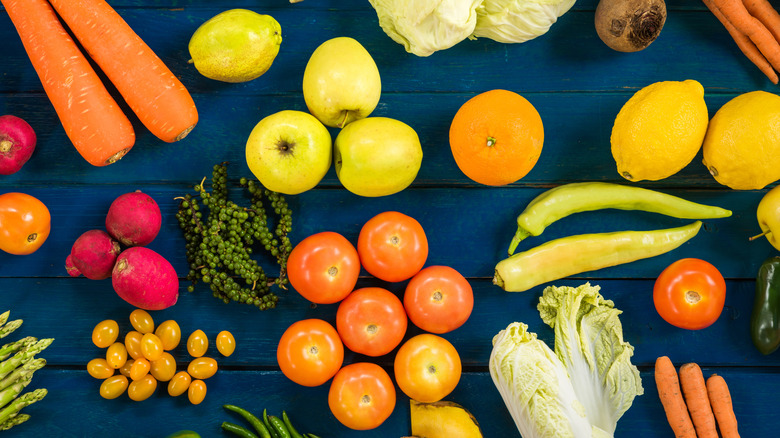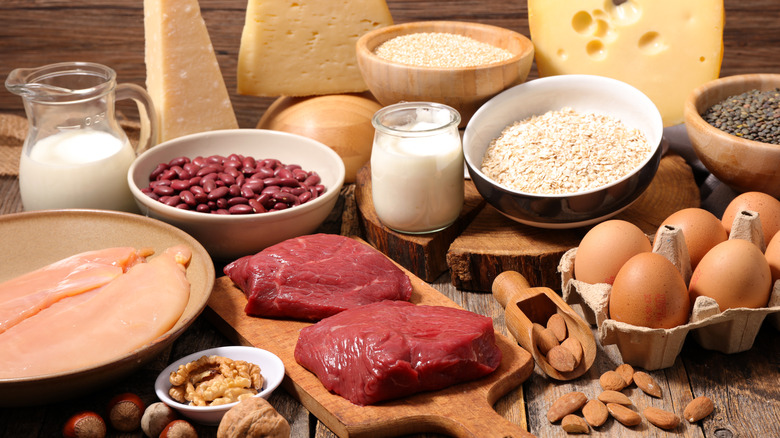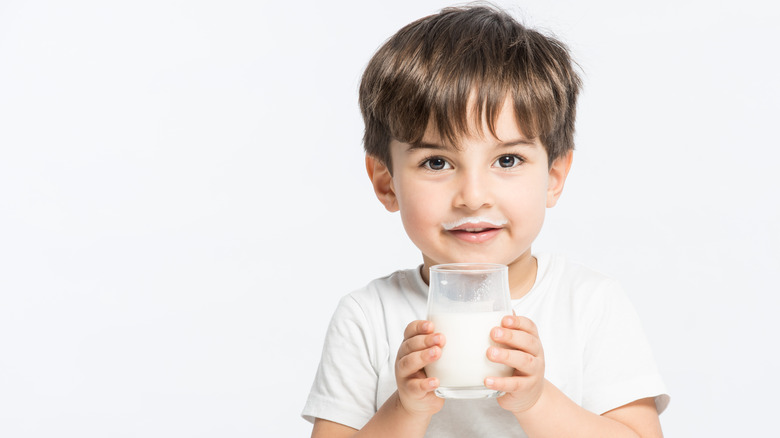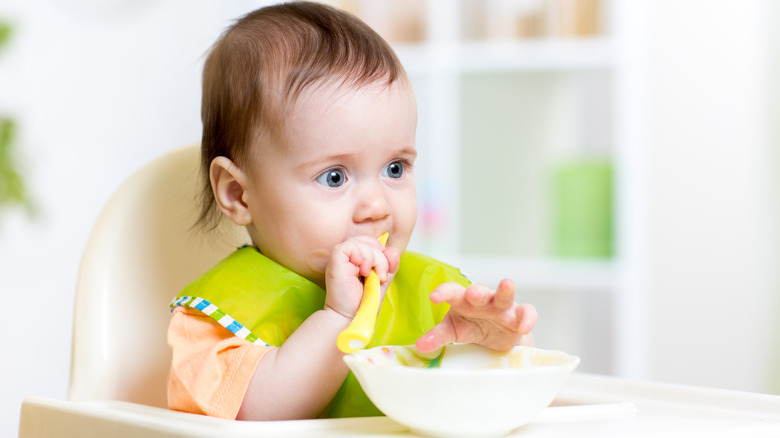What Dietitians Really Feed Their Kids
I was at the pool the other day watching my toddler take a swim class when another mom struck up a conversation with me. She and I were really hitting it off until she asked me what I do for a living. When I responded "I am a dietitian," her face dropped. She looked at me and said, "Oh, you are healthy, so your kid never eats mac and cheese?"
I wasn't really sure how to react to that comment because, to be honest, my kid does eat mac and cheese and sometimes fast food and more quesadillas than I would like — shocking I know! Don't get me wrong, he eats healthy food too, but I am far from perfect with his diet. So, before you judge us dietitians or nutritionists, understand that we don't only feed our kids perfect diets of kale and wild-caught salmon, although we do follow a few basic principles when it comes to feeding our kids.
Dietitians are busy moms too
I interviewed several fellow registered dietitians (RDs) for this article and one thing they all have in common is that they are busy. Many RDs are working moms trying to juggle all of life's demands just like anyone else. Making meals easy and fast is important for them too, you can bet they rarely spend hours in the kitchen preparing the most amazing gourmet food. Who has time for that?
Dietitian Adina Pearson of Healthy Little Eaters told me that she and her family follow a system she refers to as "division of responsibility" at meals. She says they all "share in the same foods almost at every meal we happen to be home for. Life is much easier when you're not cooking separate things for each person. Everything goes on the table, each person serves themselves. Always something on the table a child can fill up on if they don't like the main entree.... Sometimes I put together elaborate meals, but often it's simple things. Lunch is usually last night's leftovers."
Time is one of the most important parts of meal prepping for every busy mom. RDs also try to keep meal time simple because no one has time to be in the kitchen all day.
Setting kids up for healthy eating
One important theme for many RDs is how they introduce food to their kids as infants. When a child is just learning to eat it is important to expose them to a variety of flavors and healthy foods so they develop a taste for them. Alyssa Ashmore, certified sports dietitian of In Pursuit of Fruit, told me that as she was introducing food to her toddler she made sure to "offer a host of foods to diversify his palate and health, while still being mindful of a desire to cultivate a healthy relationship with food."
Dietitian Holley Grainger agrees. "My girls are 6 and 3 and tend to be very selective eaters. However, this does not stop me from introducing new foods whenever possible," she said. "I believe that continued exposure to foods (research says at least eight times) leads to great acceptance so while it may be tough to serve a food I know they previously rejected, I'm determined to press on and share as many flavors, foods, textures, and cuisines as possible."
The key for RDs is offering healthy foods and not being discouraged when the kids reject them initially. The important thing is to not give up, keep offering healthy food even if it's not always their favorite.
Encouraging variety
Several RDs have found that providing a few different options at every meal allows the kids to make their own choices on what they want to eat and encourages variety. Dietitian Christa Biegler told me, "I make sure we have a wide variety so even pickier eaters can still eat. For example, I might make a main dish and side, but I'll always cut fresh fruit or veggie to have on the table that they can try or they already like, so I know they'll have at least a couple options, even if they're turning up their nose dinner."
The key here is to try to regularly offer a variety of foods, while still giving kids option to choose what they want to eat. This doesn't mean cooking several different meals, but maybe a few different side dishes and some raw fruits or veggies on the side.
Focus on fruits and vegetables
All the RDs I spoke to really push the fruits and veggies with their kids, it seems to be a staple at every meal. Sharon Palmer of the Plant-Powered Dietitian said, " When my children were young, I would make them have a veggie and fruit at each meal. Even if it was their old standbys (apple wedges, carrot sticks, grapes, berries)."
The important thing is to offer some type of fruit or veggie at every meal, it doesn't need to be something different or exotic all the time. If your kid likes bananas or apples, give them that at their meals. Encourage them to try new fruits or veggies when available, but there is nothing wrong with sticking with the old standbys too, especially on busy weeknights.
Kid-friendly protein
Some kids reject high protein foods, opting for carbohydrates or fruits instead. Mothers tend to worry about this because they believe protein is the most important nutrient for kids. Although protein is important to build new tissues, kids actually do need a bit more carbohydrates and fats than adults. So unless there is a problem with growth, don't force a child to eat protein they don't like.
Some common kid-friendly proteins you can try are beans and meatballs, which seem to be popular among kids and RDs. Milk can also make up for some of the protein needs and is also a good source of fat and carbs. The point is don't stress about their protein intake, just keep offering high protein foods, but know that most of them are likely still getting enough.
The milk debate
Speaking of milk, a lot of clients ask me about cow's milk and whether they should give it to their kids or not. It does seem to have a bad reputation in the health community with many opting for other varieties such as almond or soy. Many people are lactose intolerant and can't drink milk without discomfort, but from the RDs I interviewed many do give their kids cow's milk, and so do I. Milk adds a significant amount of protein to a kid's diet as well as calories and fat, which they need for growth. If they are able to tolerate it, it can be an easy source of these nutrients.
Diane Norwood of The Wandering RD told me, "Only one of my three kids likes milk. Once a day she drinks a cup of whole milk because I consider it less processed and research suggests it may be healthier than reduced fat. Research also suggests saturated fat is not bad either. But my other kids have never liked milk from the day they were weaned and I don't push milk or milk substitutes, because I don't think the substitutes offer much nutrition that you can't get elsewhere from whole, real foods."
In the end, what type of milk a child drinks depends on their preferences and tolerance.
Baby-led weaning
Baby-led weaning seems to also be common practice among RDs as a way to introduce food and textures to their kids. Ashmore told me, "I have practiced both baby-led weaning and Ellen Satter's philosophies so far with my young toddler. Through baby-led weaning, he is a confident eater who tries just about anything... his own food preference and appetite are honored and explored. And as a mom, I can rest in feeding him most of anything we eat for our meals without stressing about his eating behavior or how messy he gets."
If you are not familiar, baby-led weaning involves feeding infants real food from day one, instead of purees or baby food. This allows them to learn to self-feed and explore new textures. It can be a messy process, but it does allow for a more varied and natural introduction of foods and textures to infants just learning to eat.
Avoid food rules
People may assume that RDs love to follow or enforce food rules, but we know rules just don't work. Dietitian Jessica Spiro told me that "much to the surprise of many, no food is off limits. That means we don't make a big deal about enjoying chocolate, fries, and pancakes on occasion. For me, it's more important that my toddler build a healthy relationship to food than eat the 'healthiest' foods all the time."
Most RDs recommend following food principles or guidelines, rather than strict "rules." Life happens, sometimes all you can throw together for dinner is a quesadilla. Also, it's important to enjoy food. Chocolate and pancakes taste great, so why deny a child of that pleasure?
It's not about perfection
Dietitians are far from perfect. Dietitian Jenna Braddock of Make Healthy Easy said, "I often have conversations with my boys about their favorite treats. Cupcakes, cookies, and chocolate milk are regular conversation starters with them. I like to always affirm that they are wonderful foods, and I especially love enjoying them together. But then I remind them (as neutral sounding as I can) that these aren't foods we eat all the time because that's not healthy for us."
At the end of the day, food is meant to be enjoyed. Cupcakes and cookies can fit into a healthy meal pattern from time to time. Trying to meet a standard of perfection isn't realistic for most adults, much less for children.
Empowering kids to eat healthy for life
Although you may think all dietitians feed their kids perfectly all the time, clearly that is not true. The thing is no diet is "perfect" and doesn't need to be to live a healthy life. Although a few basic principles should be followed, there is no need to restrict a child's diet.
Jennifer Hunt, dietitian and founder of Healthy Inspiration summed it up nicely when she told me about her philosophy with her daughter. She said, "We are trying to empower her with the ability to choose while still guiding her. There is no exact science or formula and raising healthy eaters is not an overnight process. It is messy, unpredictable and sometimes downright frustrating, but I am confident that training my daughter to learn body signals, make choices and fuel her body well is an attainable goal."
